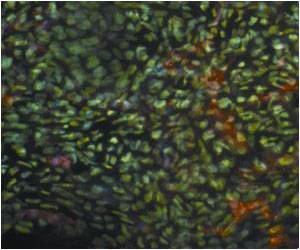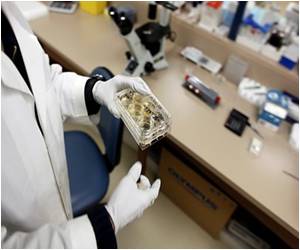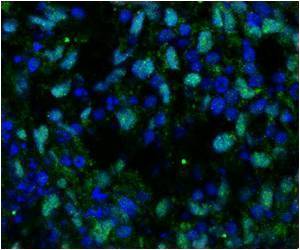A Harvard-led team demonstrates the ability to use low-power light to trigger stem cells inside the body to regenerate tissue, an advance they reported in Science Translational Medicine.

The team used a low-power laser to trigger human dental stem cells to form dentin, the hard tissue that is similar to bone and makes up the bulk of teeth. What's more, they outlined the precise molecular mechanism involved, and demonstrated its prowess using multiple laboratory and animal models.
A number of biologically active molecules, such as regulatory proteins called growth factors, can trigger stem cells to differentiate into different cell types. Current regeneration efforts require scientists to isolate stem cells from the body, manipulate them in a laboratory, and return them to the body—efforts that face a host of regulatory and technical hurdles to their clinical translation. But Mooney's approach is different and, he hopes, easier to get into the hands of practicing clinicians.
"Our treatment modality does not introduce anything new to the body, and lasers are routinely used in medicine and dentistry, so the barriers to clinical translation are low," said Mooney, who is also the Robert P. Pinkas Family Professor of Bioengineering at Harvard's School of Engineering and Applied Sciences (SEAS). "It would be a substantial advance in the field if we can regenerate teeth rather than replace them."
The team first turned to lead author and dentist Praveen Arany, D.D.S., Ph.D., who is now an Assistant Clinical Investigator at the National Institutes of Health (NIH). At the time of the research, he was a Harvard graduate student and then postdoctoral fellow affiliated with SEAS and the Wyss Institute.
Arany took rodents to the laboratory version of a dentist's office to drill holes in their molars, treat the tooth pulp that contains adult dental stem cells with low-dose laser treatments, applied temporary caps, and kept the animals comfortable and healthy. After about 12 weeks, high-resolution x-ray imaging and microscopy confirmed that the laser treatments triggered the enhanced dentin formation.
Advertisement
"This is one of those rare cases where it would be easier to do this work on a human," Mooney said.
Advertisement















